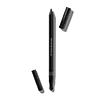What's inside
What's inside
 Key Ingredients
Key Ingredients

 Benefits
Benefits

 Concerns
Concerns

 Ingredients Side-by-side
Ingredients Side-by-side

Dimethicone
EmollientCalcium Sodium Borosilicate
Synthetic Wax
AbrasiveSilica
AbrasiveStearyl Dimethicone
EmollientCaprylic/Capric Triglyceride
MaskingSynthetic Fluorphlogopite
Trimethylsiloxysilicate/Dimethiconol Crosspolymer
Mica
Cosmetic ColorantOctadecene
SolventDimethicone/Vinyl Dimethicone Crosspolymer
Skin ConditioningPentaerythrityl Tetra-Di-T-Butyl Hydroxyhydrocinnamate
AntioxidantTocopheryl Acetate
AntioxidantTin Oxide
AbrasivePanthenol
Skin ConditioningChamomilla Recutita Flower Extract
MaskingIsoceteth-10
EmulsifyingCI 77499
Cosmetic ColorantCI 77891
Cosmetic ColorantDimethicone, Calcium Sodium Borosilicate, Synthetic Wax, Silica, Stearyl Dimethicone, Caprylic/Capric Triglyceride, Synthetic Fluorphlogopite, Trimethylsiloxysilicate/Dimethiconol Crosspolymer, Mica, Octadecene, Dimethicone/Vinyl Dimethicone Crosspolymer, Pentaerythrityl Tetra-Di-T-Butyl Hydroxyhydrocinnamate, Tocopheryl Acetate, Tin Oxide, Panthenol, Chamomilla Recutita Flower Extract, Isoceteth-10, CI 77499, CI 77891
 Reviews
Reviews

Ingredients Explained
These ingredients are found in both products.
Ingredients higher up in an ingredient list are typically present in a larger amount.
This ingredient is an emollient, solvent, and texture enhancer. It is considered a skin-softener by helping the skin prevent moisture loss.
It helps thicken a product's formula and makes it easier to spread by dissolving clumping compounds.
Caprylic Triglyceride is made by combining glycerin with coconut oil, forming a clear liquid.
While there is an assumption Caprylic Triglyceride can clog pores due to it being derived from coconut oil, there is no research supporting this.
Learn more about Caprylic/Capric TriglycerideCi 77499 is also hydrated iron III oxide. It is created from mixing red and black iron oxides. This helps give shades of darkness to a product.
Iron III oxides are classified as inorganic chemicals for coloring.
Mica is a naturally occurring mineral used to add shimmer and color in cosmetics. It can also help improve the texture of a product or give it an opaque, white/silver color.
Serecite is the name for very fine but ragged grains of mica.
This ingredient is often coated with metal oxides like titanium dioxide. Trace amounts of heavy metals may be found in mica, but these metals are not harmful in our personal products.
Mica has been used since prehistoric times throughout the world. Ancient Egyptian, Indian, Greek, Roman, Aztec, and Chinese civilizations have used mica.
Learn more about MicaStearyl Dimethicone is a type of silicone.
Synthetic Wax is created from fossil fuels such as natural gas. It is used to enhance texture, adjust pH, and as an occlusive.
It may also be used as an abrasive ingredient to exfoliate the skin.
Synthetic Wax may not be fungal acne safe.
Learn more about Synthetic Wax